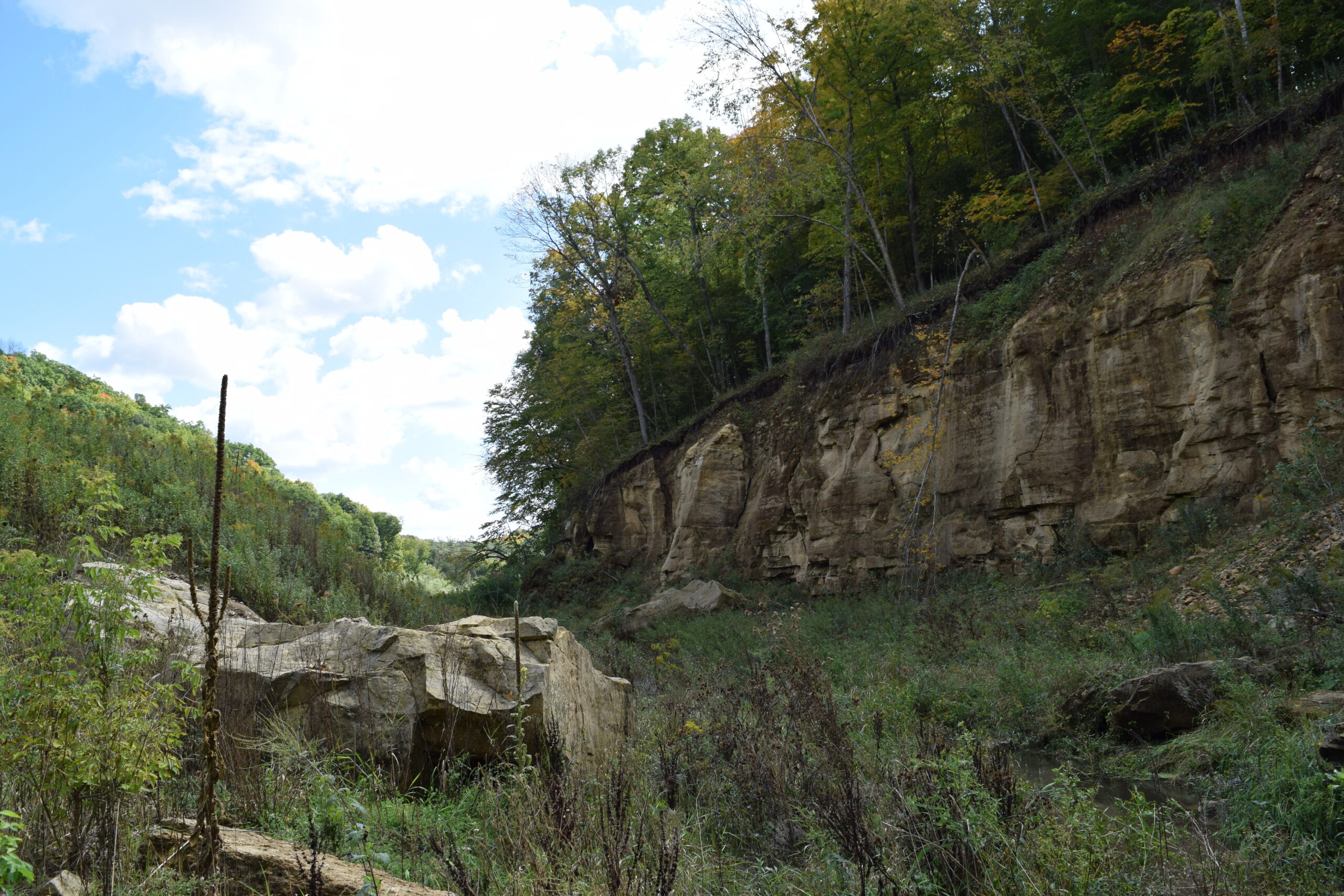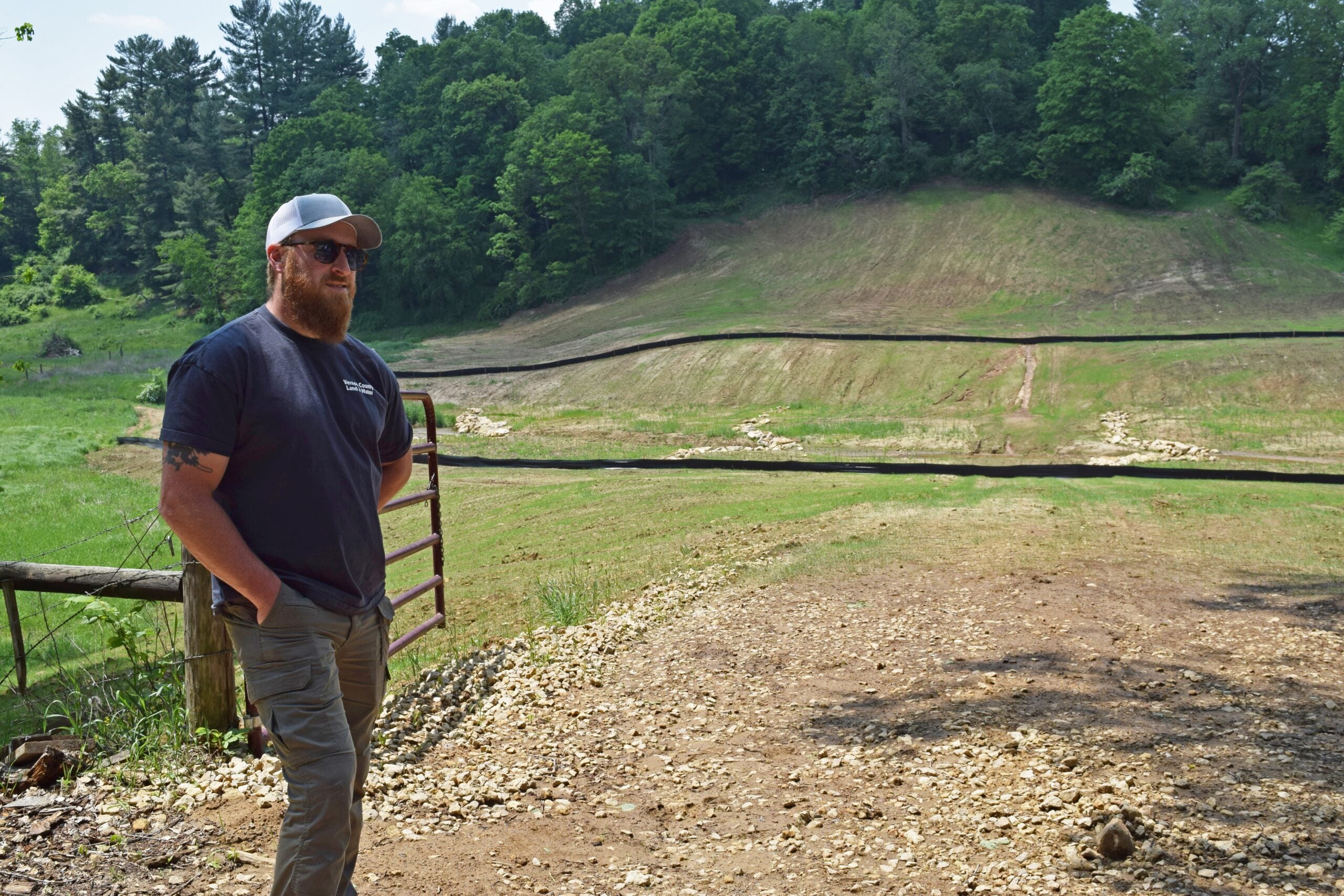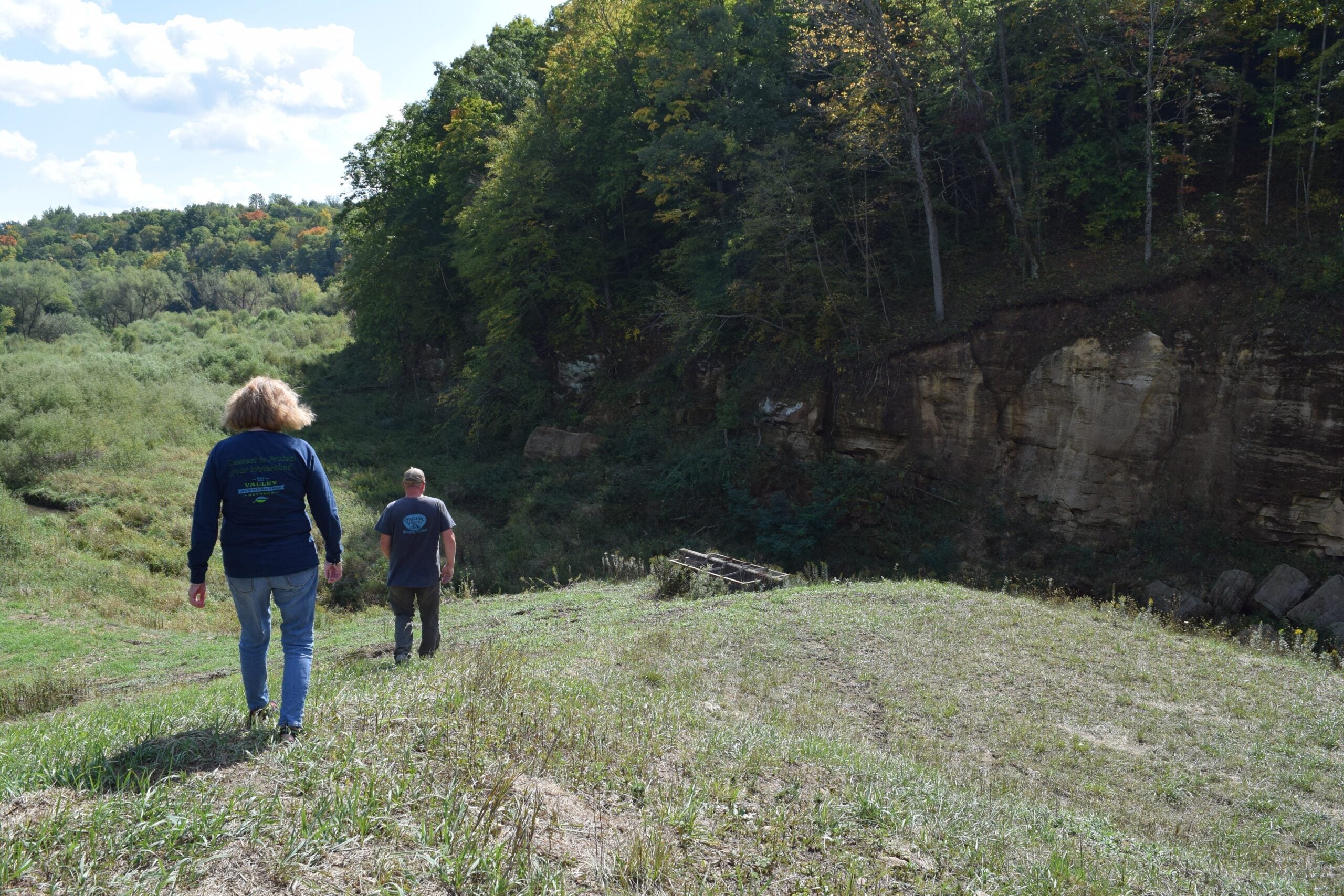Three counties in southwestern Wisconsin are waiting on federal funding to remove a network of flood-control dams that are at high risk of failure.
But Vernon County is finishing the first decommissioning of these structures thanks to state funding.
Vernon County conservationist David Hettenbach said contractors are taking the last steps to remove Mlsna Dam in the Town of Clinton. He said the $370,000 project was funded by a grant from the state Department of Natural Resources.
News with a little more humanity
WPR’s “Wisconsin Today” newsletter keeps you connected to the state you love without feeling overwhelmed. No paywall. No agenda. No corporate filter.
Mlsna Dam is one of five flood-control structures in the West Fork Kickapoo and Coon Creek watersheds that were breached during an August 2018 flood that devastated the region.
Referred to as a PL-566 dam, the structure is one of the first of its kind to be built by the U.S. Department of Agriculture’s Natural Resources Conservation Service in 1956.
An evaluation completed by the state NRCS office last year recommended decommissioning 23 of the PL-566 dams across the two watersheds. The report found that the sandstone bedrock in the area meant the structures had a high risk of failure in future floods, and would cost the federal government more money to bring them up to current standards than they would provide in economic benefits to the region.

The La Crosse, Monroe and Vernon county boards approved moving forward with the decommissioning recommendation last year. The request for funding the next step of the project was submitted earlier this year to the federal NRCS office in Washington, according to Hettenbach, who said the response so far has been “crickets”.
“While we’re waiting on our federal funding — whenever that comes or doesn’t come or a final decision is made about that — we’re going to continue to try to carry out what the county board voted on: the planned decommissioning of these dams,” Hettenbach said.
He said the county plans to apply for another DNR grant. But with 14 dams identified for removal in the county, it would take more than a decade to tackle the project using the annual state funding.
‘I’m not giving up yet’
President Donald Trump’s efforts to cut spending across federal agencies has created some uncertainty about whether NRCS will have funding to move the project forward by designing the decommissioning of each dam.
Bob Micheel, Monroe County’s land conservation director, said he doesn’t blame Vernon County for being proactive about finding other funding. But he thinks the counties need to give NRCS more time.
“I’m not giving up yet,” Micheel said. “It’s only been a few months. A year from now, that’s when I would start exploring (other funding options), and I would think Monroe County wouldn’t be the only one.”
Micheel pointed out it took almost six years from the 2018 flood to have a recommendation from NRCS. Even if the agency approves funding for the design phase, he said the counties will still have to go back and ask the agency for money to actually complete the project.
Monroe County is home to three of the breached dams from the 2018 flood. He said there is a real motivation for removing the high-risk structures before another major event.
“We don’t want that liability lingering around,” he said. “We can’t design our way out of this, so it’s best to get back to more upland practices and land use decisions that are infiltrating, or holding water back. And when we do have these big floods, we have to respect it and stay out of harm’s way.”
Wisconsin Public Radio, © Copyright 2026, Board of Regents of the University of Wisconsin System and Wisconsin Educational Communications Board.






